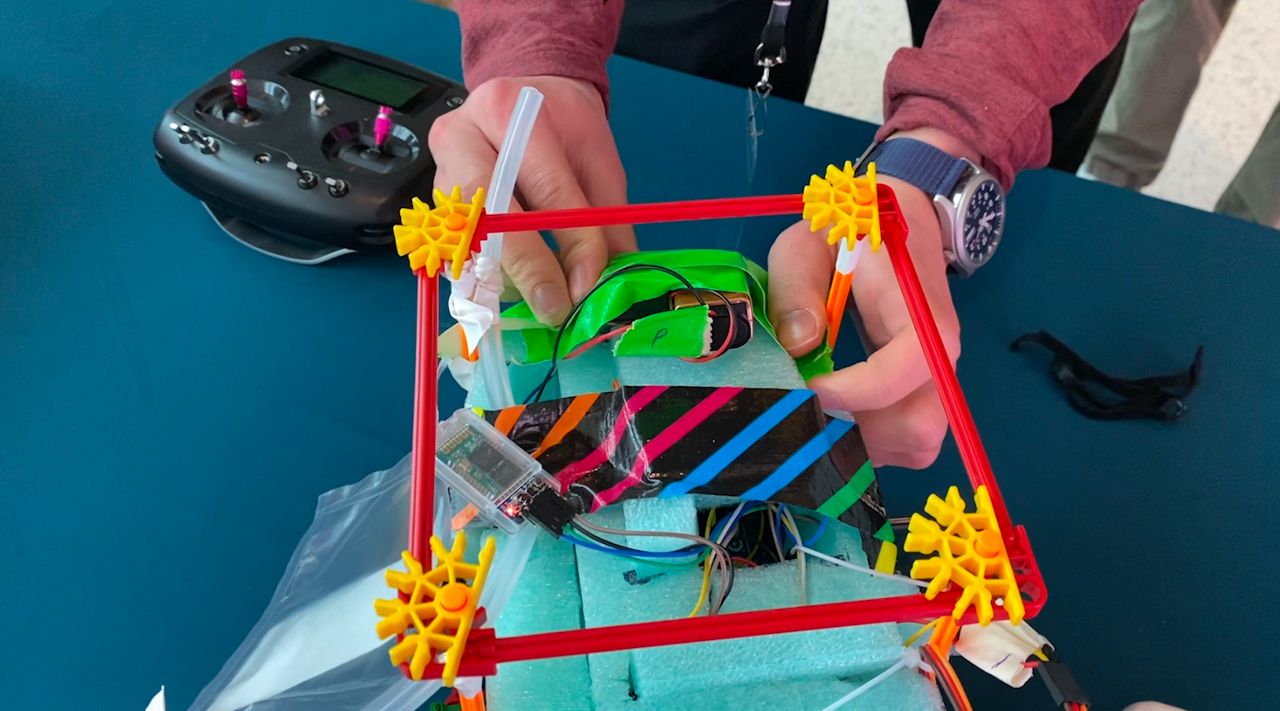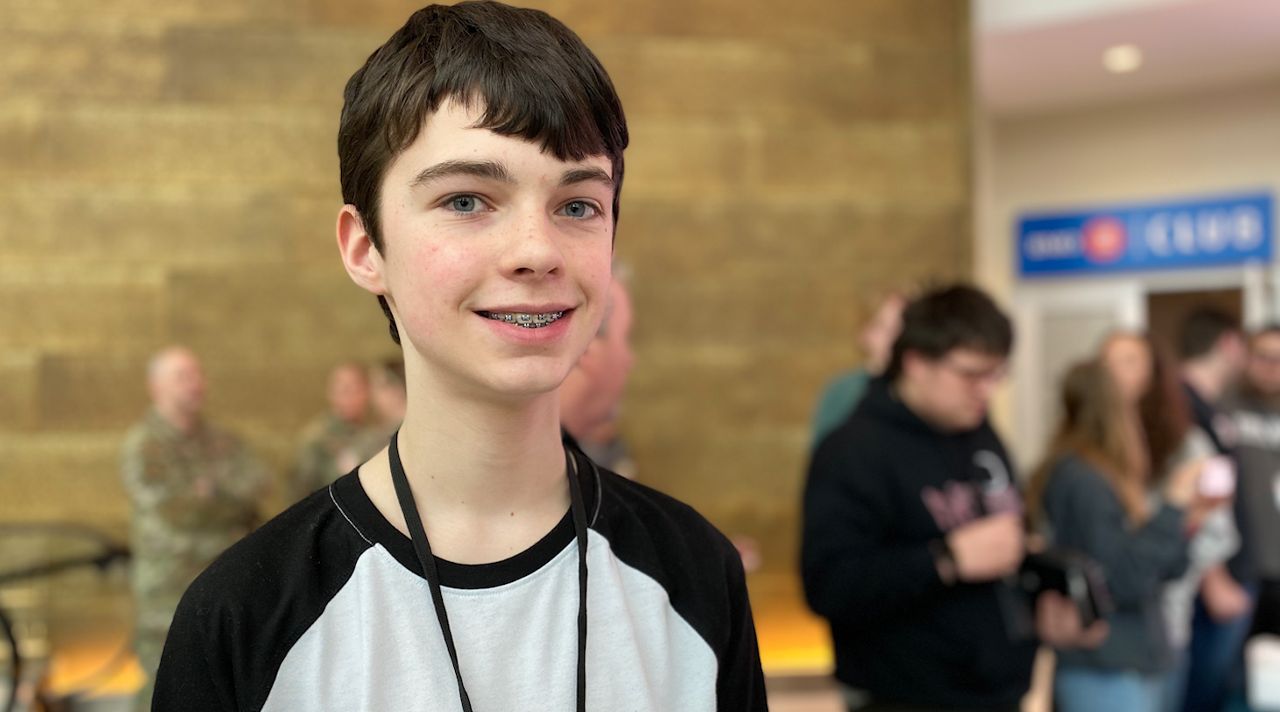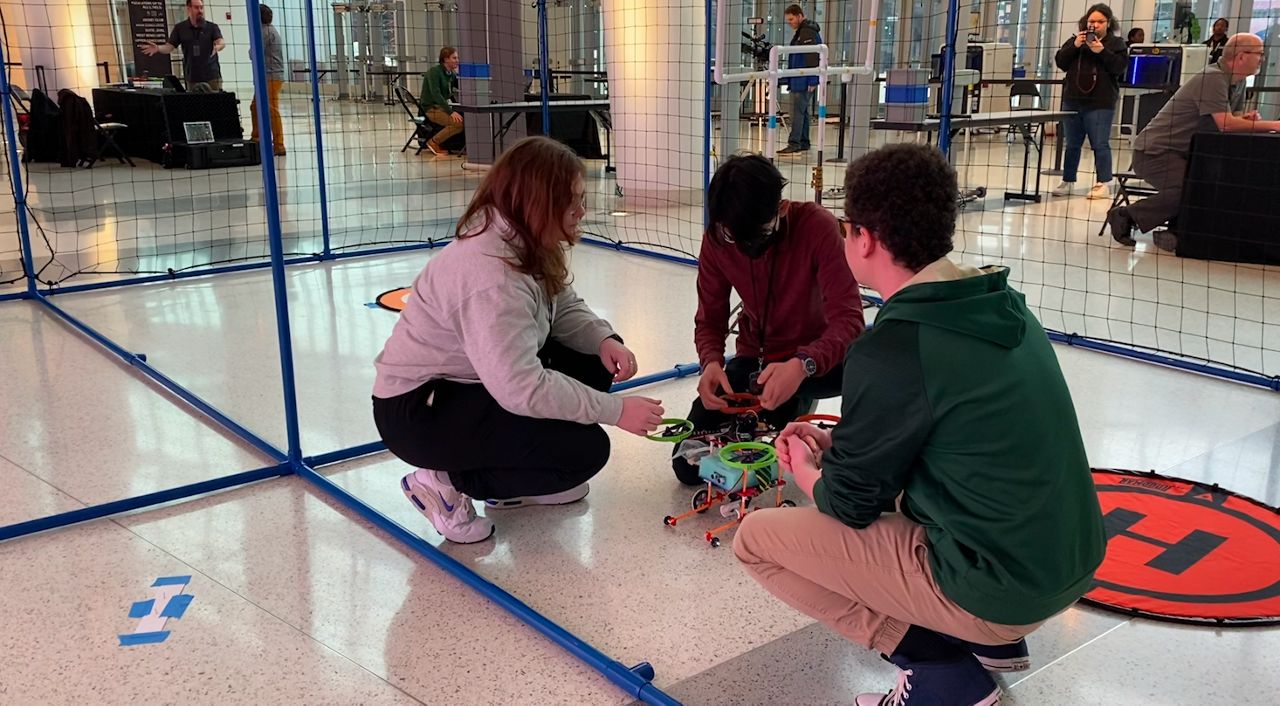MILWAUKEE — High school teams from across Wisconsin joined together Thursday to build and fly drones on a NASA Mars-inspired simulated mission.
It was part of Carroll University’s Aerospace Jam 2022-23. The competition took place at Fiserv Forum. The program is co-sponsored by the NASA Wisconsin Space Grant Consortium.
Micahel Mortensen is the Director of Aviation and Science at Carroll University. He said the program’s focus is to recruit students from diverse backgrounds and include underrepresented schools.
Mortensen said after working with Milwaukee Public Schools, MPS started their own summer workshop after they saw the benefits of this type of competition.

He said programs like this are helping inspire schools to add more STEM programming.
“Our main focus was to include those unrepresented schools that didn’t have opportunities like this,” said Mortenson. “We went out and recruited some of these schools to participate in this as a part of inclusion and diversity.”
Students across Wisconsin are using their knowledge and skills to get their drones to successfully take flight.
Seventh grader Henry Martin said there’s a lot that goes into getting a drone off the ground. Martin has been doing coding and software work since the second grade.
That hard work has taken him to many special places.

“I’ve actually been allowed to join early,” said Martin. “I’m not even in high school yet, but I’m still team captain on a team of high schoolers. I’m really lucky to have this ability to do any of this.”
Last November, participating teams were provided with a drone and sensor kit to design and build a data-acquiring platform for a “landing” on Mars. Specific team challenges included specific drone maneuverability tasks, sensing and locating objects within the flight area, and more.
Timothy Canham was a judge in the competition. He is the senior software engineer at the NASA jet propulsion lab. He leads the team of engineers in developing the software for the NASA ingenuity helicopter that’s currently operating on the surface of mars.
“Not all students have access to the resources they need to build these systems,” said Canham. “Having something like the Wisconsin Space Consortium and teach them to build these things and fly them is really important.”
He hopes students like martin continue their passion in this field to possibly have a future at places like NASA.

“It’s really important to reach out to all these different schools and catch students while they’re young,” he said.
Martin said the years he’s invested into this field so far at a young age will pay off. He’s excited about a future in software engineering and is thankful for opportunities that will help get him there.



